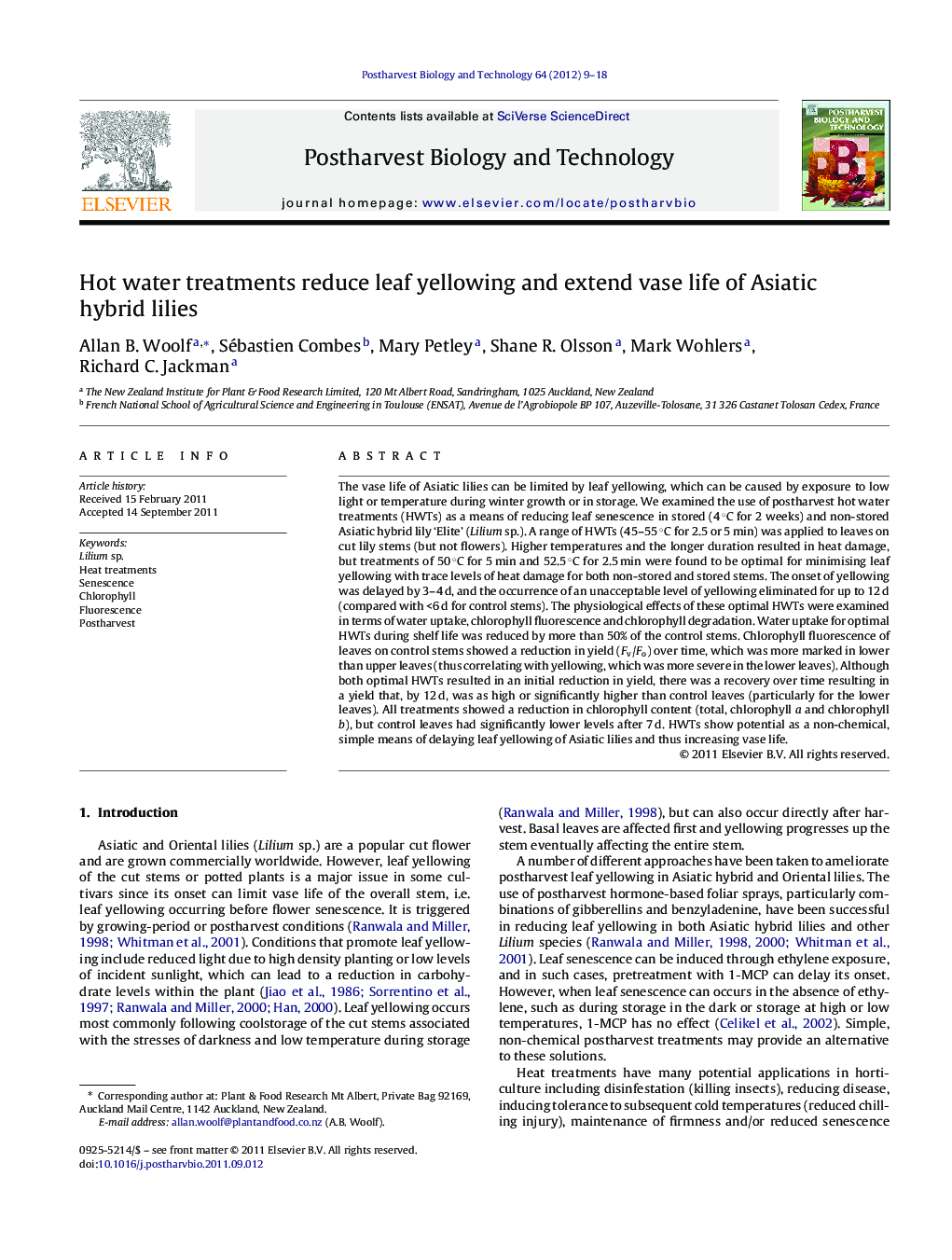| Article ID | Journal | Published Year | Pages | File Type |
|---|---|---|---|---|
| 4518817 | Postharvest Biology and Technology | 2012 | 10 Pages |
The vase life of Asiatic lilies can be limited by leaf yellowing, which can be caused by exposure to low light or temperature during winter growth or in storage. We examined the use of postharvest hot water treatments (HWTs) as a means of reducing leaf senescence in stored (4 °C for 2 weeks) and non-stored Asiatic hybrid lily ‘Elite’ (Lilium sp.). A range of HWTs (45–55 °C for 2.5 or 5 min) was applied to leaves on cut lily stems (but not flowers). Higher temperatures and the longer duration resulted in heat damage, but treatments of 50 °C for 5 min and 52.5 °C for 2.5 min were found to be optimal for minimising leaf yellowing with trace levels of heat damage for both non-stored and stored stems. The onset of yellowing was delayed by 3–4 d, and the occurrence of an unacceptable level of yellowing eliminated for up to 12 d (compared with <6 d for control stems). The physiological effects of these optimal HWTs were examined in terms of water uptake, chlorophyll fluorescence and chlorophyll degradation. Water uptake for optimal HWTs during shelf life was reduced by more than 50% of the control stems. Chlorophyll fluorescence of leaves on control stems showed a reduction in yield (Fv/Fo) over time, which was more marked in lower than upper leaves (thus correlating with yellowing, which was more severe in the lower leaves). Although both optimal HWTs resulted in an initial reduction in yield, there was a recovery over time resulting in a yield that, by 12 d, was as high or significantly higher than control leaves (particularly for the lower leaves). All treatments showed a reduction in chlorophyll content (total, chlorophyll a and chlorophyll b), but control leaves had significantly lower levels after 7 d. HWTs show potential as a non-chemical, simple means of delaying leaf yellowing of Asiatic lilies and thus increasing vase life.
► Short duration hot water treatment (HWT) of the leaves of Asiatic lilies can effectively minimise leaf yellowing in stored, and non-stored stems. ► Reduction in yellowing by HWT was correlated with reduced loss of chlorophyll and reduced water loss. ► Leaves lower down the stem showed earlier and more significant yellowing than those higher up the stem. ► Chlorophyll fluorescence was measured and although optimal HWTs showed an initial reduction in yield, there was a recovery over time resulting in a yield that by 12 d was significantly higher than control leaves. ► HWTs show potential as a non-chemical, rapid means of reducing senescence/yellowing in lily leaves.
